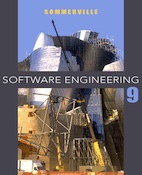Instructor's Guide
This section of the website is intended to help instructors who are using the book in their teaching. The first thing to say here is that software engineering has the potential to be a dull subject (but essential) as there is lots of descriptive material. I strongly recommend therefore when you are teaching to make as much use as possible of the examples in the book, spending more time talking about and explaining these in lectures. Let the students read about the background to these examples. I also try and draw on case studies whenever possible and the case studies on this web site and in the book can be drawn on as a source of extra examples.
You may wish to use the presentations that I have prepared or to develop your own presentations based on the book chapters. To make this easier, you can access all of the figures in the text separately. All of the presentations are made available under a creative commons licence which means that you may change them in any way that you wish.
Changes from previous editions
This section shows the correspondance between the chapters in this edition and chapters in the 8th edition and summarizes the principal changes that have been made. All chapters have had some updating, with the new case study replacing the previous library case study where appropriate.
This section discusses a range of courses that can be put together using the material in the book, based on my own teaching experience. The book has been deliberately designed so that Part 1 is a stand-alone introduction to software engineering and that the other sections may form the core of an advanced software engineering course.
Quizzes and solutions manual (restricted)
A manual for instructors providing solutions to selected exercises from the book (50% of the exercises for each chapter) is available. In addition, I have created quizzes for each chapter made up of 10 questions with short factual answers. These can be used for class tests or for student self-assessment.
The solutions manual and the quizzes are hosted on a Pearson Education webpage, which is password protected. Accredited instructors can obtain a password for access to this material from Pearson by registering at the Pearson Instructor Resource Center or by requesting a password from computing@aw.com.
Please do NOT contact me for a password as I have no means of providing one for you, nor do I maintain an on-line copy of the solutions or quizzes on this website.
If you use this material in your teaching, you must not make it available on any public website.
For previous editions, I have tried to keep updating the material on additional reading and have failed miserably as there are so many good papers and articles. I simply don't have time to update pages on a regular basis. I have therefore changed my approach here and will include links to recommended articles on my SE book blog, tagged 'SE9' and 'Reading' and categorized as SE9-reading. I write briefly on interesting papers that I have read there and on other software and systems engineering issues.
Most of these papers or articles are in the ACM or IEEE Digital libraries and students will need access to these if they are to download the papers. Alternatively, you can check the authors' web sites as they often make their own papers available there.

